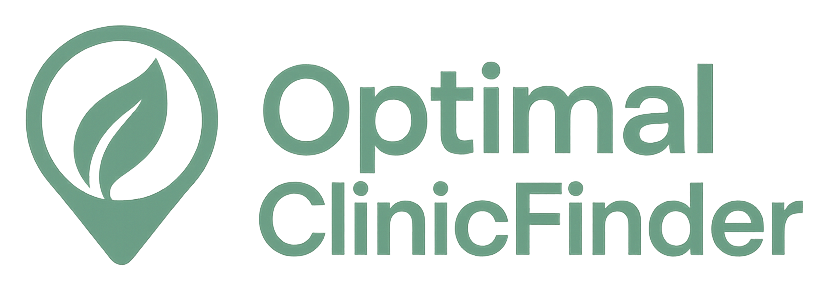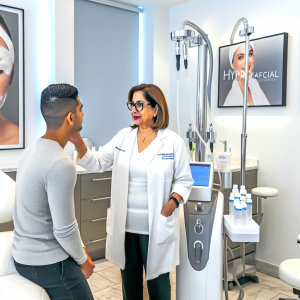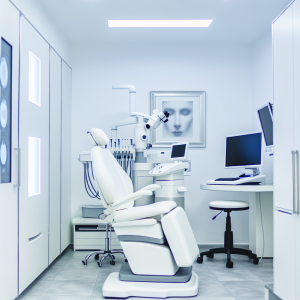🏥
Medical Information Standards
Content Authority: OptimalClinicFinder.com is a comprehensive medical directory platform connecting patients with qualified Botox providers. Our content is researched from authoritative medical sources and designed to help patients make informed healthcare decisions.
How Botox Works: Clinical Mechanism and Facial Applications
Botox (onabotulinumtoxinA) belongs to a class of neurotoxin medications that work by temporarily blocking acetylcholine release at neuromuscular junctions. When administered into facial muscles, the medication binds to presynaptic nerve terminals, preventing the release of neurotransmitters that cause muscle contractions. This targeted muscle relaxation reduces the formation of dynamic wrinkles and allows existing lines to soften over time.
The medication’s primary mechanism involves cleaving SNARE proteins essential for vesicle fusion and neurotransmitter release. This process is reversible, with nerve terminals regenerating new protein complexes over 3-6 months, explaining why Botox treatments require periodic maintenance. The precise targeting of specific facial muscles allows for customized treatment approaches that preserve natural facial expressions while reducing unwanted wrinkles and lines.
💡
Did You Know?
Clinical studies show that Botox patients achieve excellent results when combined with professional-grade aftercare products.
Clinical Research and Evidence Base
The clinical development of Botox for cosmetic applications involved multiple large-scale randomized controlled trials, including the landmark BOTOX Cosmetic Glabellar Lines studies. These trials enrolled over 1,600 participants across diverse demographics and followed patients for up to 120 days post-treatment. The primary endpoint data consistently demonstrated significant improvements in wrinkle severity scores compared to placebo, with 80% of patients achieving at least one-grade improvement.
Subgroup analyses revealed that Botox effectiveness extends across different age groups, skin types, and wrinkle severities. The medication showed particular efficacy in treating glabellar lines, crow’s feet, and forehead wrinkles, with duration of effect ranging from 3-6 months. Long-term studies have confirmed that repeated treatments maintain efficacy without diminishing returns, and some patients experience longer-lasting results with continued use.
Treatment Protocols and Clinical Management
Successful Botox facial treatment requires careful patient assessment and individualized injection planning. The initial consultation includes comprehensive facial analysis, muscle movement evaluation, discussion of aesthetic goals, and establishment of realistic expectations. Healthcare providers must assess facial anatomy, identify appropriate injection sites, and develop customized treatment protocols based on individual muscle patterns and desired outcomes.
The standard treatment protocol involves precise dosing calculated per treatment area, with typical doses ranging from 20-64 units depending on muscle mass and treatment goals. Most patients receive injections every 3-4 months to maintain optimal results, though treatment intervals may be adjusted based on individual response patterns. Proper injection technique includes specific anatomical landmarks, appropriate needle depth, and post-treatment care instructions to optimize outcomes and minimize complications.
💡
Quick Tip
Botox works best when combined with healthy lifestyle choices for optimal results.
Safety Profile and Risk Management
The safety profile of Botox for cosmetic applications has been extensively characterized through clinical trials and post-marketing surveillance involving millions of treatments. The most common adverse events include temporary injection site reactions, mild bruising, and headache, which typically resolve within 24-48 hours. More significant but rare complications can include ptosis (eyelid drooping), asymmetry, and unintended muscle weakness.
Serious adverse events occur in less than 1% of treatments and may include allergic reactions, flu-like symptoms, or muscle weakness beyond the injection site. Risk factors for complications include pregnancy, neuromuscular disorders, certain medications, and previous allergic reactions to botulinum toxin. Healthcare providers should educate patients about warning signs requiring immediate medical attention, including difficulty swallowing, speaking, or breathing.
Cost Analysis and Treatment Value
The cost of Botox facial treatments varies significantly based on geographic location, provider experience, treatment areas, and units required. Without insurance coverage (as cosmetic treatments are typically not covered), patients can expect to pay between $10-$20 per unit, with most facial treatments requiring 20-60 units depending on the areas treated. Total treatment costs typically range from $300-$1,200 per session.
Treatment value should be considered in terms of duration of results, safety profile, and impact on quality of life. Most patients achieve 3-6 months of wrinkle reduction per treatment, making the annual cost comparable to many other cosmetic interventions. Many practices offer package deals, loyalty programs, or financing options to make treatments more accessible to patients seeking regular maintenance.
Botox Facial Near Me: Provider Selection and Treatment Access
Choosing a qualified provider for botox facial near me treatments is crucial for achieving optimal results while minimizing risks. Patients should seek board-certified dermatologists, plastic surgeons, or other qualified medical professionals with extensive experience in facial anatomy and injection techniques. Important credentials include medical board certification, specialized training in cosmetic injectables, and a track record of successful outcomes.
✓
Why Choose Botox?
●
Clinically proven
●
FDA approved
●
Minimal downtime
●
Long-lasting
When evaluating botox facial near me options, consider factors such as provider experience, facility accreditation, before-and-after photo galleries, patient reviews, and consultation quality. Reputable providers will conduct thorough consultations, explain risks and benefits, provide realistic expectations, and follow proper safety protocols. Avoid non-medical providers or discount services that may compromise safety or results quality.
Maximizing Treatment Outcomes
Optimizing Botox facial results involves proper pre-treatment preparation, post-treatment care, and realistic expectation setting. Pre-treatment recommendations include avoiding blood-thinning medications and supplements for one week prior, staying well-hydrated, and arriving with clean skin free of makeup. Post-treatment care involves avoiding exercise for 24 hours, remaining upright for 4 hours, and avoiding facial manipulation.
Long-term success with Botox facial treatments often involves combining injections with comprehensive skincare regimens, sun protection, and healthy lifestyle habits. Many patients achieve enhanced results by incorporating medical-grade skincare products, regular professional treatments, and consistent maintenance schedules. Working closely with qualified providers ensures treatment plans evolve with changing aesthetic goals and aging processes.
📚 Medical Authorities & Professional Standards
All Botox procedures should be performed by licensed medical professionals following established clinical guidelines and safety protocols.
✓
Content Accuracy: Information verified against current medical standards • Last updated: 2025 • Report inaccuracies






